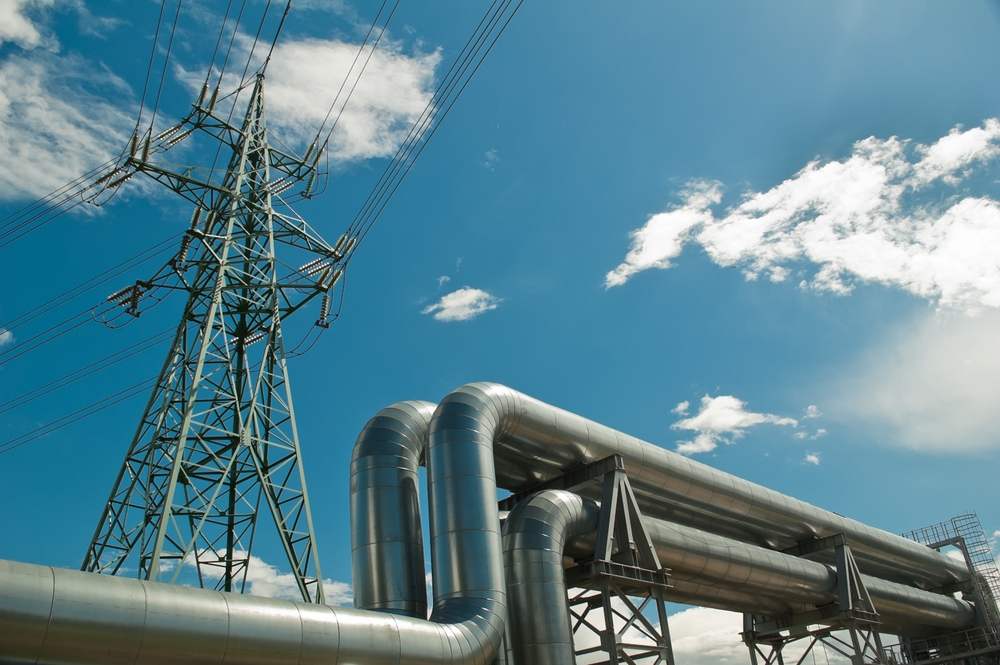5 Limits on U.S. Electrification — and Today’s Most Feasible Solutions

The push to “electrify everything” can be an effective strategy to reduce carbon emissions, but it’s not a one-size-fits-all solution. Persistent challenges, including specific industrial process requirements and grid issues, require diverse, sustainable solutions like low-carbon fuels, carbon capture, and microgrids.
A recent article in the Wall Street Journal explains that the drive to “electrify everything” through a renewables-powered grid offers a fast, cheap way to minimize carbon emissions — but not a complete solution. Electrification remains limited by several persistent factors, from use cases that require fuel to utility grid issues.
Electrification can be an effective tool in the energy transition, where possible. But for many industries and for the clients we serve, it’s not always a feasible solution. Below, we share our insights into electrification’s limitations and the solutions, like low-carbon fuels, carbon capture, and microgrids, that offer a sustainable alternative where electrification and renewables aren’t available.
1. Some industrial processes can’t be electrified
Many industrial activities, such as blast furnace operations, cement kilns, and petrochemical processes, are not easily electrified. These processes often demand direct fuel combustion to achieve the high temperatures and pressures vital for production. For instance, manufacturing essential materials like cement, glass, steel, fertilizer, and paper necessitates temperatures ranging from 300 to 1,800℃. At the same time, any unplanned interruption, whether from electrical fluctuations or external disruptions, could compromise the end product and risk damaging costly industrial equipment.
2. Alternatives are coming for hard-to-decarbonize use cases
Attempting to switch to electric power might not be the best approach for industries where cheaper, more effective solutions are on the horizon. Low-carbon fuels and carbon capture and sequestration (CCS) are rapidly becoming more feasible and cost-effective options, while cogeneration systems can offer immediate efficiency gains. Currently, there are four leading options to decarbonize fuels.
Hydrogen: Hydrogen is emerging as a leading “clean fuel” for industrial processes. Hydrogen production will likely become more widespread thanks to Inflation Reduction Act (IRA) incentives.
Renewable Natural Gas (RNG): Also known as biogas, RNG is currently a clean fuel option for some sectors, can be produced locally or on-site, and can reduce the carbon intensity of pipeline gas.
Carbon Capture & Sequestration (CCS): In addition, a manufacturing facility can incorporate CCS post-combustion to reach carbon neutral. The IRA provides financial incentives that enhance the economic viability of CCS projects, spurring rapid development in this area.
Advanced Microgrids: Widely available today, a fourth alternative is using advanced microgrids, which frequently include combined heat and power (CHP) for thermal efficiency. Using natural gas to support electric and thermal processes, cogeneration can cut a site’s emissions by 20-60% compared to the utility, while increasing energy efficiency between 65-80%. While CHP using natural gas is not zero carbon, the increased efficiency from using waste heat is a large step in the right direction. Going forward, CHP can incorporate hydrogen or RNG to lower carbon intensity, or integrate with CCS to become net-zero for electrical and thermal production.
3. Renewables require large amounts of space
While there’s no shortage of uninhabited land, especially in the U.S., availability doesn’t guarantee suitability for alternative energy installations. Because the electric utilities are a long way from net zero, facilities need to install their own on-site generation. Most large power users such as industrial facilities, hospitals, and data centers do not have sufficient available land or rooftop space.
Solar requires unobstructed sunlight and sufficient space — about 8.1 acres per MW. A facility that plans to support 1 MW of baseload demand with on-site renewables would require 8 MW of solar and 30 MWh of storage.
At a national level, the challenge is daunting. According to the Wall Street Journal article, a wind farm spanning 100,000 acres generates electricity comparable to a one-gigawatt nuclear plant on just 640 acres. Under a high-renewable-energy scenario by 2050, the U.S. would need a staggering 244 million acres for wind turbines, a massive leap from today’s 20 million acres used for all power generation. Current power lines occupy 4.8 million acres, but this could surge with increased renewables.
4. The electric transmission system is already overloaded
Today’s utility grid is already strained with increasing loads, even before we shift to greater electrification of cars, stoves, and heating. In 2022, U.S. energy consumption rose by 1.5% over 2021 levels. This continued rise in demand is partly due to changes associated with the Energy Transition, such as increased consumer electrification and the growing popularity of EVs. While we retire coal plants and build wind and solar farms, the need for dispatchable capacity for when the wind isn’t blowing or the sun isn’t shining will become even more dire. Making matters worse, 70% of utility infrastructure, including transmission lines and equipment, is over two decades old.
Can this rise in grid demand be met quickly enough by renewable energy? Often, renewable energy sources are located far from populous areas, necessitating more transmission lines and their corresponding permitting — a process that can span years. Though the U.S. Congress has discussed permitting reform, a clear solution remains elusive. As the Wall Street Journal article notes, BloombergNEF estimates a monumental $21.4 trillion is required to expand and maintain the current grid.
Microgrids are localized energy systems that can help address the shortcomings of our outdated energy infrastructure and get facilities closer to net zero faster instead of waiting for large-scale investments. Microgrids are also part of the solution because they mitigate stress on the grid, especially during peak usage times, such as on sweltering days when energy conservation is critical.
5. Electricity grids don’t solve for resiliency threats
As our dependency on electricity deepens, so does the risk of placing our entire energy system on grid infrastructure. From unpredictable weather systems to potential cyberattacks, the grid is fragile, and the financial implications of outages are staggering.
In 2022 alone, the U.S. faced 18 significant climate events, each costing over $1 billion, with power outages amplifying these expenses. Businesses suffer immensely from these outages, with some losing thousands of dollars every minute. Drastic weather conditions also led to particularly volatile energy prices in 2022.
Again, microgrids could be the antidote to such challenges. Microgrids not only protect facilities against such disruptions but also counter the rising utility bills and equipment issues plaguing many sites by offering reliable power and price certainty.
Energy Solutions Need More Than Electrification
While the U.S. will need increased electrification, it will also need alternative solutions to ensure effective and resilient power across use cases. Recognizing this, Unison Energy offers innovative on-site energy solutions for our clients. By designing, building, owning, operating, and maintaining our microgrids, we can meet your site’s sustainability and resiliency goals while reducing your energy bills, ensuring an Energy Transition that works for everyone.
To learn more about the solutions Unison Energy can offer your facility, please contact us.
Energy insights, delivered
Subscribe for more content.
